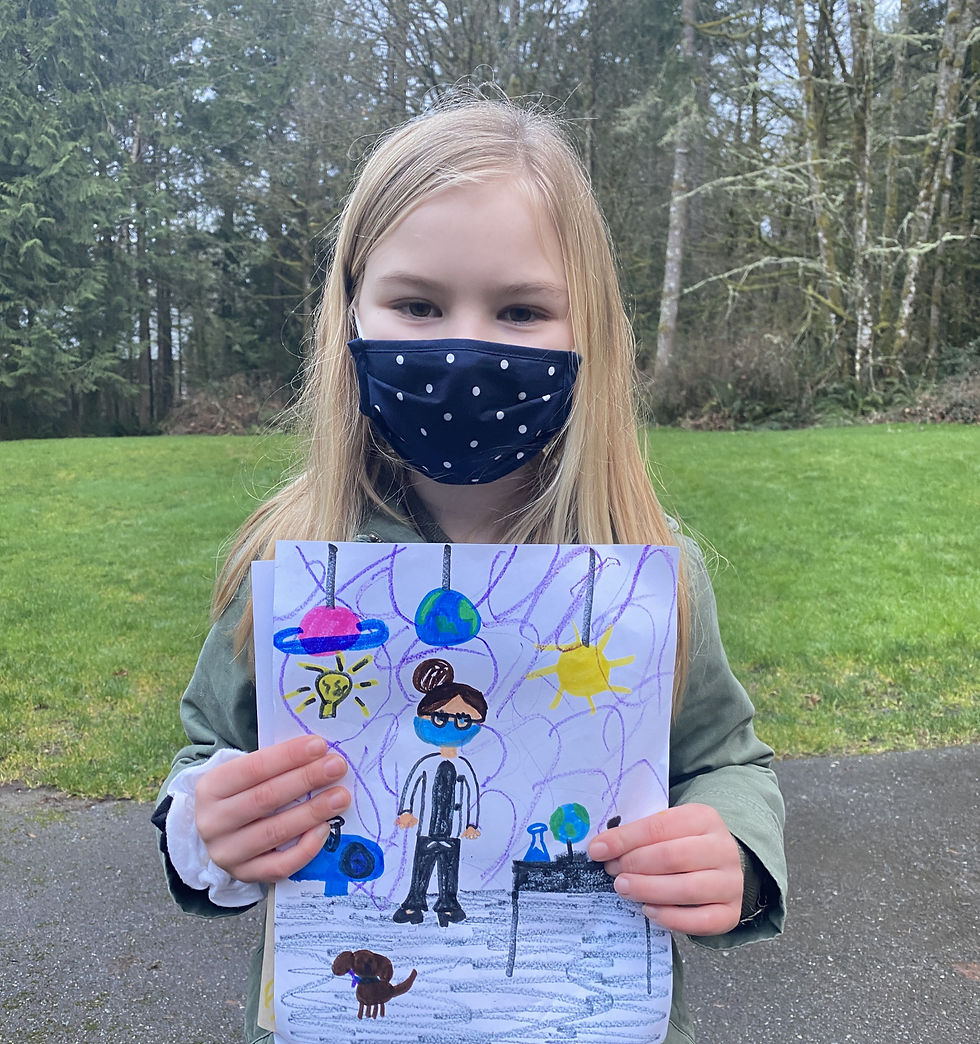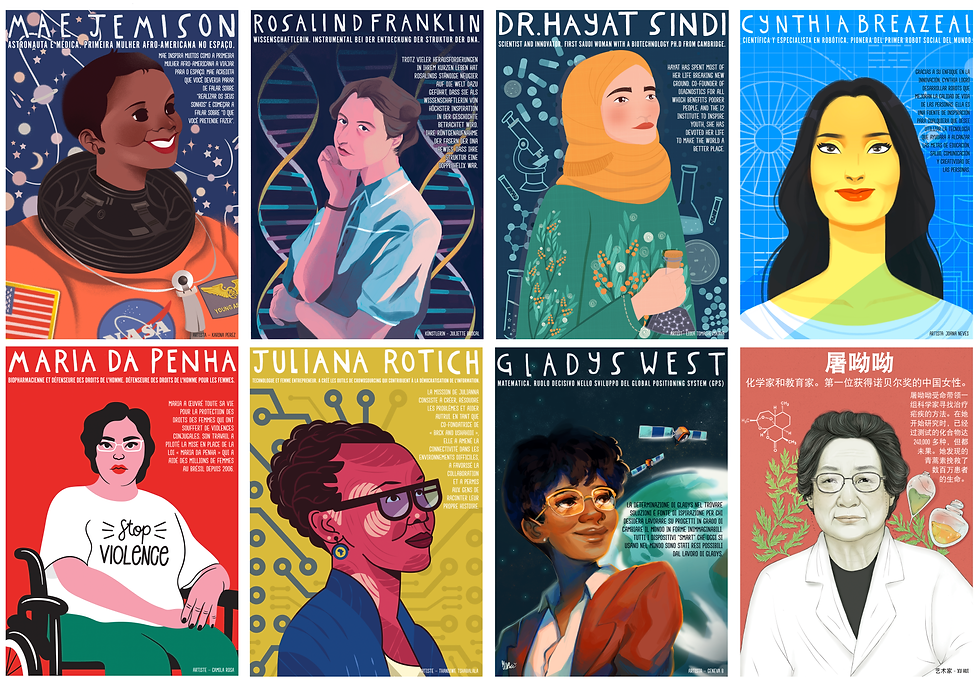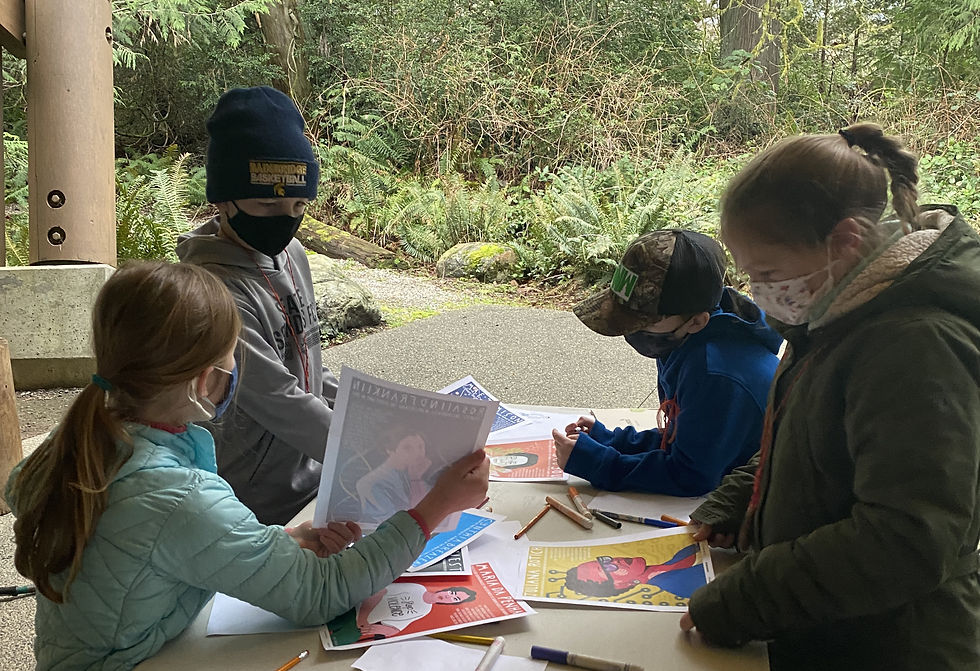Draw a Scientist
- cindyinthewild
- Apr 15, 2021
- 3 min read

What does a scientist look like? Who can be a scientist? What kind of problems do scientists work on?
On the first day of meeting Team Estuary, my group of students in 3rd and 4th grade, we answered those questions together. The learning objectives were for students to create representations of their science identities and identify topics that they are interested in as scientists. My co-teacher Natalie and I first prompted students to define science in their own words. One of the students suggested that "anyone can be a scientist, and they can make mistakes", which told me that students were interested in emphasizing how scientists are real, everyday people like them.
We eventually made our way to the art studio, where we presented them with an activity to "draw a scientist". We prompted them with questions like "What do scientists do?" and "Where do they work?" so that they could focus on drawing the workspace and setting in which they think scientists work.

As they begin to draw their scientists, I shared illustrated posters featuring eight scientists who were all women and came from diverse backgrounds in terms of nationality, race, and area of study. This was an important component of the lesson for me because I wanted to students to reflect on the diverse representation of people who can be scientists. My teaching philosophy as a science educator is about finding every opportunity for students to reflect on how the science field has historically marginalized women and people of color. I usually start by asking students to make observations about identifiable characteristics, such as their names, or notice patterns of similarity or difference amongst the people I present to them.
The images below are the posters that I printed for the students:

After students had a couple of minutes to look through the posters, I asked them for any observations or noticings they had about the scientists. One of the students mentioned that one of the scientist's name was different, pointing to Tu Youyou (bottom row, last image), and said "I'm not sure how to say his name". I clarified to her that Tu Youyou is a female scientist, to which she responded with surprise and brought up a noticing that scientists can look different. A few of the students also perceived Rosalind Frank as a man at first, before realizing she was a woman. To these responses, I followed up by asking why they perceived the scientist in a particular way, and what knowing that new information means as they continue thinking about "who can be a scientist". I was excited to hear how the students were drawn to specific posters based on the art design, the familiarity of the person to someone they know of, and the misconceptions they initially had about the scientists.

By the end of this lesson, students shared the drawings they made to each other. It was interesting to see how each of the students drew a scientist that reflected their own physical appearances, such as hair and skin color and gender. They all drew their scientists in a lab, with typical objects commonly represented in depictions of labs, such as diagrams, tables, instruments, planets, and pictures of animals and plants. During our debrief discussion, I was excited to hear their responses to my question of "What problems is your scientist working on?", to which they answered "creating a COVID vaccine for kids", "learning about plants", "saving animals", and other issues that were of concern to them.

















Comments